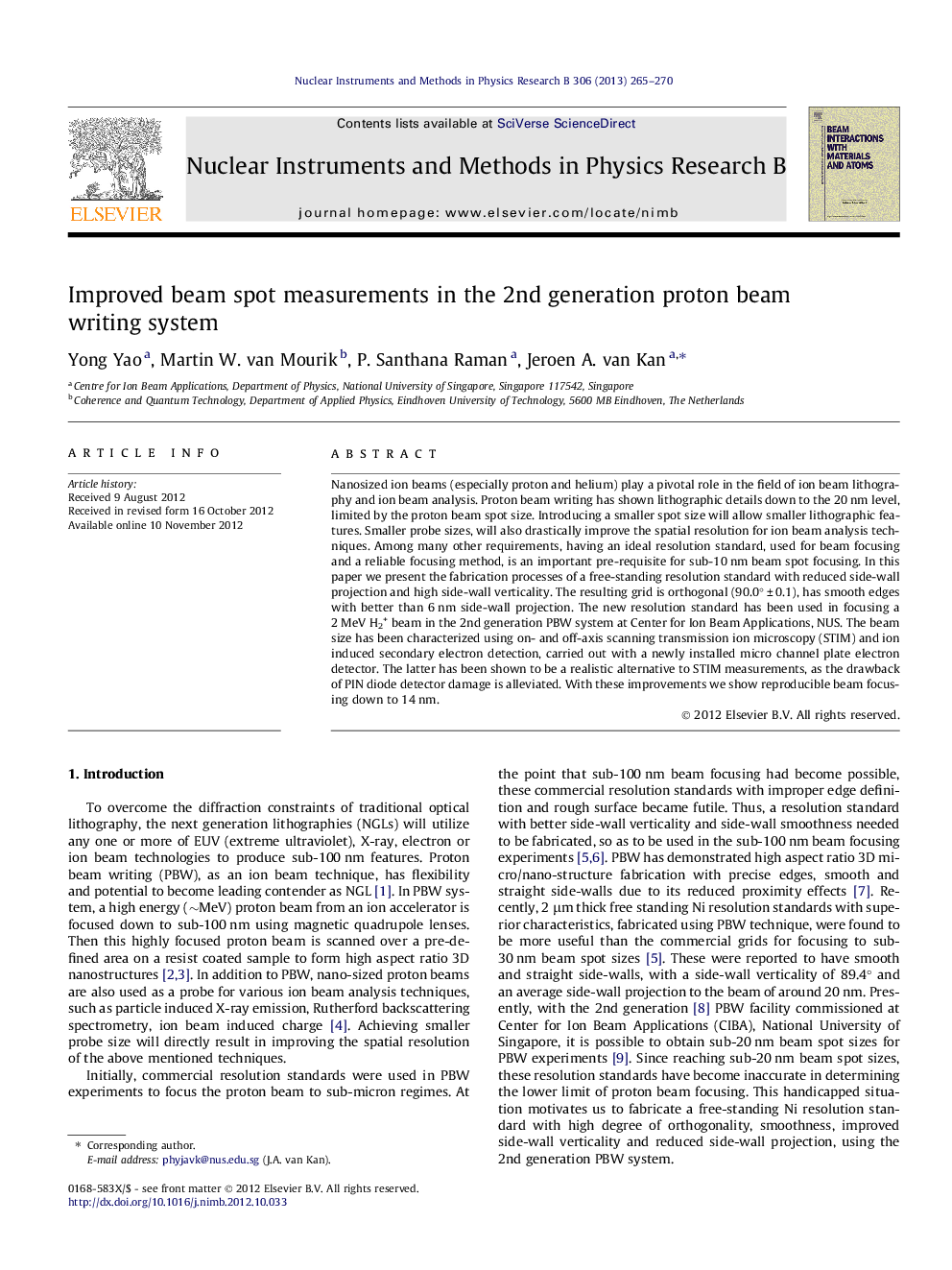| Article ID | Journal | Published Year | Pages | File Type |
|---|---|---|---|---|
| 8042732 | Nuclear Instruments and Methods in Physics Research Section B: Beam Interactions with Materials and Atoms | 2013 | 6 Pages |
Abstract
Nanosized ion beams (especially proton and helium) play a pivotal role in the field of ion beam lithography and ion beam analysis. Proton beam writing has shown lithographic details down to the 20 nm level, limited by the proton beam spot size. Introducing a smaller spot size will allow smaller lithographic features. Smaller probe sizes, will also drastically improve the spatial resolution for ion beam analysis techniques. Among many other requirements, having an ideal resolution standard, used for beam focusing and a reliable focusing method, is an important pre-requisite for sub-10 nm beam spot focusing. In this paper we present the fabrication processes of a free-standing resolution standard with reduced side-wall projection and high side-wall verticality. The resulting grid is orthogonal (90.0° ± 0.1), has smooth edges with better than 6 nm side-wall projection. The new resolution standard has been used in focusing a 2 MeV H2+ beam in the 2nd generation PBW system at Center for Ion Beam Applications, NUS. The beam size has been characterized using on- and off-axis scanning transmission ion microscopy (STIM) and ion induced secondary electron detection, carried out with a newly installed micro channel plate electron detector. The latter has been shown to be a realistic alternative to STIM measurements, as the drawback of PIN diode detector damage is alleviated. With these improvements we show reproducible beam focusing down to 14 nm.
Related Topics
Physical Sciences and Engineering
Materials Science
Surfaces, Coatings and Films
Authors
Yong Yao, Martin W. van Mourik, P. Santhana Raman, Jeroen A. van Kan,
